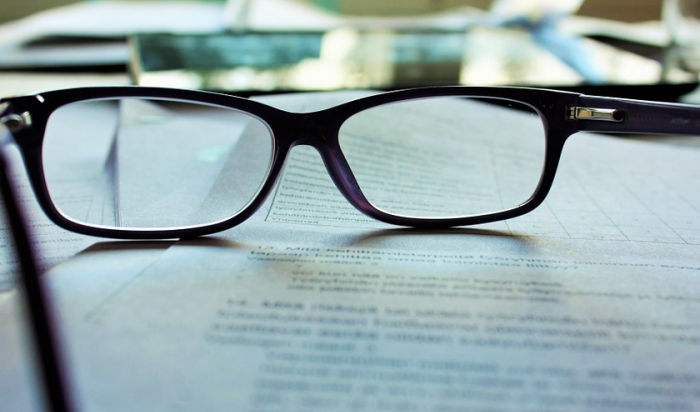Welcome to the first session of our blog series on disabilities, where we aim to shed light on various impairments and the challenges individuals face in their everyday lives. In this installment, we focus on visual disabilities, exploring the categories, characteristics, and barriers encountered by those living with visual impairments.
Defining Visual Disabilities
Defining Visual Disabilities refers to the process of describing and understanding the various impairments or conditions that affect a person’s ability to see, interpret, or process visual information. Visual disabilities encompass a wide range of eye-related conditions, each with its own characteristics and impact on an individual’s vision.
These conditions can manifest in different ways, such as reduced visual acuity, limited field of vision, color blindness, or even complete blindness. Visual disabilities can be congenital (present from birth) or acquired later in life due to injury, disease, or age-related factors.
Categories of Visual Disabilities
Low Vision
People with low vision have a limited ability to see even with the aid of corrective lenses. This can range from blurred vision to a narrowed field of view. Tasks like reading, recognizing faces, and navigating the environment can become challenging.
Blindness
Blindness is the complete loss of vision, resulting in the inability to perceive light or darkness. Some individuals are born blind, while others may lose their vision due to injury, illness, or progressive conditions.
Color Blindness
Color blindness is a condition where individuals have difficulty distinguishing certain colors. The most common form is red-green color blindness, which can make it challenging to recognize specific shades.
Characteristics of Visual Disabilities
- Visual Acuity: The ability to see fine details and distinguish objects from a distance.
- Field of Vision: The extent of the area a person can see without moving their eyes or head.
- Contrast Sensitivity: The ability to differentiate between objects based on variations in color, brightness, or shading.
- Light Sensitivity: Some individuals may be extremely sensitive to bright lights, making it uncomfortable or even painful to be in well-lit environments.
- Depth Perception: The ability to judge distances accurately, which affects mobility and coordination.
Associated Barriers

Individuals with visual disabilities face numerous challenges in their daily lives due to various barriers, including:
- Access to Information: Printed materials, digital content, and signage can be inaccessible for individuals with visual disabilities, making it difficult to gather information independently.
- Mobility and Navigation: Getting around unfamiliar environments can be daunting due to obstacles, uneven terrain, or lack of proper signage.
- Education and Employment: Visual disabilities can affect educational opportunities and employment prospects, as many traditional learning and work environments may not be fully accommodating.
- Social Inclusion: Participating in social activities and events may be challenging, leading to feelings of isolation and exclusion.
- Technology Accessibility: The rapid advancement of technology has provided new opportunities, but it also brings challenges in terms of accessibility for those with visual disabilities.
Breaking Down Barriers

While visual disabilities present unique challenges, there are several ways to enhance accessibility and break down barriers:
Accessible Design
Accessible design for visual disabilities is essential in creating an inclusive environment where individuals with vision impairments can navigate and interact with ease. Implementing features such as clear signage with large, high-contrast fonts, tactile maps, and audio cues in public spaces can facilitate independent mobility. In digital contexts, incorporating screen reader compatibility, alt-text for images, and resizable text ensures that websites and applications are accessible to those with visual impairments. Furthermore, providing braille labels and tactile elements on everyday products enhances their usability for individuals with visual disabilities. By prioritizing accessible design, we can dismantle barriers and empower people with visual impairments to participate actively in all aspects of life, fostering a more equitable and welcoming society for everyone.
Assistive Technology
Assistive technology plays a crucial role in enhancing accessibility and breaking down barriers for individuals with visual disabilities. Specialized tools and software cater to the unique needs of people with vision impairments, enabling them to access information and engage in various activities more effectively. Screen readers are a prime example, as they convert text into speech, allowing individuals to “read” digital content. Braille displays offer a tactile way to access information, while magnification software assists those with low vision by enlarging on-screen content. Additionally, electronic travel aids and navigation apps facilitate independent mobility for individuals with visual disabilities. With the continuous advancement of assistive technology, individuals with visual impairments can participate more fully in education, employment, and social interactions, fostering greater inclusion and empowering them to lead more fulfilling lives.
Education and Awareness
Raising awareness about visual disabilities and their impact can foster understanding and empathy, leading to more inclusive communities. By increasing understanding and empathy, we can create a more inclusive and supportive environment for those with visual impairments. Educational institutions can implement inclusive teaching practices, providing accessible learning materials and technologies tailored to individual needs. Raising awareness among students and staff about visual disabilities fosters a culture of acceptance and promotes collaboration and mutual respect. Additionally, public awareness campaigns can dispel misconceptions and stereotypes surrounding visual disabilities, encouraging society to embrace diversity and recognize the unique talents and capabilities of individuals with visual impairments. Through education and awareness, we can work towards building a society that celebrates inclusivity, creating equal opportunities for all, regardless of their visual abilities.
Legislation and Policy
Laws and policies are vital for helping people with visual disabilities. They make public places, transportation, and digital platforms easier to use. Employment policies ensure fairness and accommodations at work. Accessible education, healthcare, and social services are made available to support them. These efforts create a more inclusive world, empowering individuals with visual disabilities to live fulfilling lives.
Support and Collaboration
Working together as a society to support and empower individuals with visual disabilities can lead to a more inclusive and compassionate world.
Visual disabilities encompass a diverse range of conditions that significantly impact the lives of affected individuals. Understanding the categories, characteristics, and associated barriers can help us create a more inclusive and accommodating society. In the upcoming sessions of this blog series, we will explore more about disabilities and the importance of promoting accessibility for all. Stay tuned for our next installment!
What is next?
In our next installment, we’ll understand Auditory Disabilities and explore the categories, characteristics, and barriers encountered by those living with auditory impairments.
For more information on why accessibility is important in general, you can check out my previous blog post here.
For further information on how In our next installment, we’ll explore the importance of captions for individuals with hearing disabilities and delve into how we can promote digital products using captions with semantic markup to enhance accessibility for those with hearing impairments.to make your product accessible to your audience, contact our experienced design experts, check out our Accessibility IQ for your website, download our guide Digitally Accessible Experiences: Why It Matters and How to Create Them, read more from our UX for Accessible Design series.

